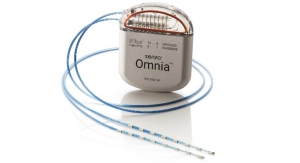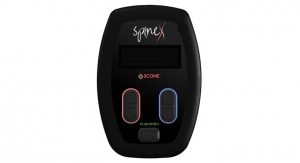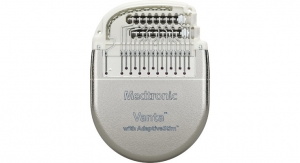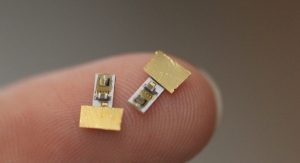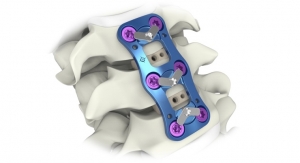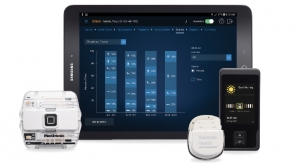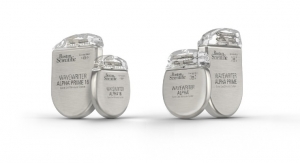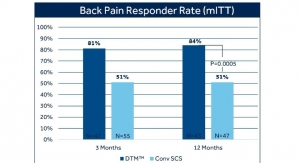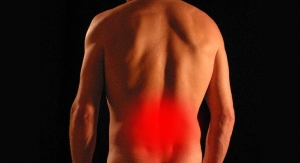Videos
Experimental Electrical Implant Reduces Man's 'Invisible' Spinal Cord Injury Symptoms
Experimental Electrical Implant Reduces Man's 'Invisible' Spinal Cord Injury Symptoms
The treatment improved the patient's previously affected blood pressure, core muscle, bowel function, and overall energy.
By University of British Columbia02.20.18
An experimental treatment that sends electrical currents through the spinal cord has improved "invisible" yet debilitating side effects for a B.C. man with a spinal cord injury.
A diving accident six years ago left Isaac Darrel, of Langley, British Columbia, with a spinal cord injury. Side effects of the injury include dizziness, fluctuations in blood pressure and changes in bladder and bowel function.
Darrel made the decision to have electrodes surgically implanted over his spinal cord in 2016 to test out a treatment known as epidural stimulation in the hopes of improving some of the side effects. A case study about his experiences was published in JAMA Neurology.
"Mobility issues or paralysis are the most visible consequences of a spinal cord injury but as a clinician, I know that many of my patients suffer from other 'invisible' consequences," said Dr. Andrei Krassioukov, principal investigator of the study who worked with Darrel for a number of years as a professor of medicine at UBC and chair in rehabilitation research with ICORD, a Vancouver research center focused on spinal cord injuries. "Many of my patients have abnormal blood pressure and bladder, bowel and sexual dysfunctions that can be quite devastating."
Epidural stimulation involves surgically inserting electrodes permanently above the spinal cord and then stimulating the nerve cells in the spinal cord with electrical currents. The therapeutic benefits of epidural stimulation have been well-documented for chronic back pain, but a small number of experimental trials are testing the treatment on people with spinal cord injuries.
With a remote control, Darrel uses the stimulator for up to 45 minutes each day, applying different programs to transmit electrical impulses into his spinal cord that mimic the same signals that would come from the brain. The programs are designed to stimulate specific nerves that help with various motor functions, but Darrel and Krassioukov have observed other positive changes.
Before the treatment, Darrel said he often felt light-headed, especially when he moved from his bed to his wheelchair or during exercise, and his blood pressure would drop.
"My blood pressure would tank right down into the 60s," said Darrel, who describes feeling nauseous and like the world was spinning. "I would pass out or black out sitting in my chair sometimes. Now, since I have the implant, I'm able to turn up the stimulation enough that it makes it impossible for me to black out."
The symptoms Darrel experienced are part of a disorder known as orthostatic hypotension, resulting from poor cardiovascular function. Since the surgery, a team of researchers at ICORD have been following Darrel's case and running tests to determine how his cardiovascular function has changed. Using something called a tilt table, they put patients into an upright position to see if they are able to maintain their blood pressure.
"If there is no drop in arterial blood pressure, it is considered normal," said Dr. Krassioukov. "It means the person has good control of blood vessels in their lower extremities and the abdomen."
The stimulator has improved Darrel's ability to control his blood pressure as well as other benefits.
"I've had better blood pressure, better core muscle, much improved bowel function, and basically I have more energy," said Darrel, who noted that this means he can now sit in his wheelchair for up to eight hours, a big improvement from the two hours he could endure prior to the surgery.
The results point to the need to fully understand how this treatment could be used in clinical settings. Krassioukov and his colleagues are currently collaborating with colleagues in the U.S. on a larger trial, examining the benefits of epidural stimulation on a bigger group. They are also involved in research on a similar but non-invasive version of the treatment that involves stimulating the spinal cord with a device positioned on top of the skin at the University of California, Los Angeles.
"We see very interesting and exciting results but as a clinician-scientist, I need more robust data before I would recommend this procedure," he said.
Related Searches:




